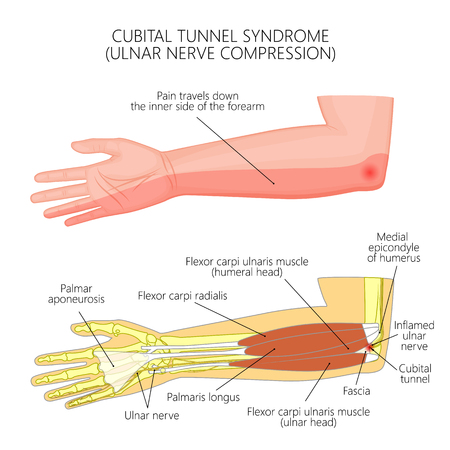Understanding the Importance of Balance and Coordination in Later Life
Maintaining good balance and coordination is a cornerstone of healthy ageing for older adults across the UK. As we grow older, natural changes in our muscles, joints, vision, and nervous system can make it more challenging to stay steady on our feet. This increases the risk of falls, which are a leading cause of injury and loss of independence among people over 65. For many older adults, even minor balance issues can lead to anxiety about leaving the house or engaging in social activities, which may negatively impact mental health and quality of life. By prioritising the assessment and support of balance and coordination, practitioners play a crucial role in helping older adults remain independent for longer, reduce their risk of falls, and maintain overall wellbeing. Recognising these concerns within the context of the UK’s healthcare system—where prevention and early intervention are highly valued—highlights the need for tailored assessments that address both physical function and individual lifestyle factors. Empowering older adults to stay active, safe, and socially connected is not just beneficial for individuals; it also alleviates pressures on NHS resources by reducing hospital admissions related to falls. In summary, effective assessment and proactive management of balance and coordination are essential steps towards safeguarding independence and enhancing quality of life in later years.
Common Causes of Balance and Coordination Difficulties in Older Adults
Understanding the underlying reasons for balance and coordination issues is essential for effective assessment and management in older adults. In the UK, several factors—ranging from physiological changes to environmental hazards—can contribute to these difficulties. Below, we explore the most common causes relevant to British practitioners.
Age-Related Physiological Changes
As people age, natural changes occur that can affect balance and coordination. These include reduced muscle strength, slower reaction times, decreased joint flexibility, and diminished sensory perception (such as vision or proprioception). Such changes are normal but can significantly impact mobility and increase fall risk among older adults.
Medical Conditions Affecting Balance
Certain health conditions are particularly prevalent in the UK’s ageing population and can influence balance:
| Condition | Description | Impact on Balance |
|---|---|---|
| Parkinson’s Disease | Progressive neurological disorder common in older adults | Leads to tremors, stiffness, and postural instability |
| Stroke | Frequent cause of disability in the UK | Causes weakness or paralysis on one side of the body |
| Arthritis | Affects nearly half of people over 65 in Britain | Pain and joint stiffness reduce mobility and stability |
| Diabetes | Widespread chronic condition in the UK elderly population | Can result in peripheral neuropathy affecting sensation in feet |
| Dementia | Increasingly common cognitive disorder with age | Affects coordination and spatial awareness |
The Role of Medications
Many older adults take multiple medications (polypharmacy), increasing the risk of side effects such as dizziness or drowsiness. Some drugs commonly prescribed in the UK—like antihypertensives, sedatives, or antidepressants—can directly impair balance or exacerbate coordination problems.
Environmental Influences Specific to the UK
The British climate, with its frequent rain and icy conditions, poses unique environmental challenges. Slippery pavements, uneven paths, poorly lit streets, and cluttered homes can all increase the risk of falls. Practitioners should consider seasonal hazards and typical home layouts when assessing older adults living independently.
Summary Table: Key Contributing Factors in the UK Context
| Factor Type | Example(s) |
|---|---|
| Physiological Changes | Sarcopenia, reduced vision/hearing, slower reflexes |
| Medical Conditions | Parkinson’s disease, stroke, arthritis, diabetes, dementia |
| Medications | Benzodiazepines, antihypertensives, antidepressants |
| Environmental Hazards (UK-specific) | Icy pavements, poor lighting at home, steep staircases, wet bathroom floors |
By recognising these common causes within a British context, practitioners can better tailor assessments and interventions to support safer ageing in place for their patients.
![]()
3. Taking a Comprehensive History: Key Questions for UK Practitioners
Conducting a thorough and patient-centred history is essential when assessing balance and coordination issues in older adults. UK practitioners should approach this process with empathy and clarity, ensuring that the older adult feels comfortable sharing their experiences. Begin by exploring any recent falls or near-misses, as these can provide invaluable insight into underlying problems. Ask open-ended questions such as, “Have you had any slips, trips or falls in the last six months?” or “Can you tell me about any times you have felt unsteady on your feet?” This helps to identify patterns, triggers, and potential risk factors.
Next, delve into mobility challenges. It’s important to understand whether the individual has noticed changes in their walking speed, confidence outdoors, or difficulty with stairs and uneven surfaces. Questions like “Do you feel confident moving around your home?” and “Are there any activities you avoid because of concerns about your balance?” encourage honest discussion and help shape further assessment.
The home environment plays a crucial role in safety. Enquire about living arrangements, use of mobility aids (such as sticks or frames), and any modifications made for accessibility. You might ask, “Are there any areas of your home where you feel particularly at risk of falling?” or “Have you made any changes at home to help with your mobility?”
Finally, explore existing NHS or social care involvement. Determine if the patient has had previous assessments from community falls services, physiotherapists, or occupational therapists. Understanding ongoing support is key for continuity of care and integrated planning. Questions could include “Are you currently receiving any support from the NHS or local council?” and “Have you had advice or equipment provided to help with your balance?”
This comprehensive approach not only informs clinical decision-making but also ensures that the patient’s voice remains central to their care—reflecting best practice across UK health and social care settings.
4. Physical and Functional Assessment Approaches
Assessing balance and coordination in older adults requires structured, evidence-based methods that allow practitioners to identify specific deficits and tailor interventions accordingly. In the UK, several standardised assessment tools are widely adopted in both community and clinical settings due to their reliability, validity, and practicality. Below is an overview of key assessments commonly used by practitioners.
Timed Up and Go (TUG) Test
The TUG test is a quick and practical measure of basic mobility and balance. The individual is asked to rise from a chair, walk three metres, turn around, return, and sit down again. The time taken to complete this task offers valuable insight into fall risk and functional mobility. Generally, a time of more than 12 seconds indicates increased risk of falls in community-dwelling older adults.
Berg Balance Scale (BBS)
The Berg Balance Scale is a comprehensive tool evaluating static and dynamic balance through 14 simple tasks—such as standing with eyes closed, turning 360 degrees, or retrieving an object from the floor. Each item is scored on a five-point scale (0–4), with a maximum total score of 56. Scores below 45 suggest a higher risk for falls.
| Assessment Tool | Key Features | Clinical Use |
|---|---|---|
| Timed Up and Go (TUG) | Measures time to stand, walk 3m, turn & return | Quick screening for mobility/fall risk |
| Berg Balance Scale (BBS) | 14-item balance performance measure | Detailed evaluation of static/dynamic balance |
| Gait Analysis | Observational or instrumented walking assessment | Identifies gait abnormalities affecting safety |
Gait Analysis
Gait analysis ranges from basic observational techniques—such as watching for asymmetry or shuffling—to advanced instrumented assessments using pressure mats or wearable sensors. Observing gait helps practitioners detect subtle changes that may indicate underlying neurological or musculoskeletal conditions contributing to balance issues.
Practical Considerations for UK Practitioners
Selecting appropriate tools depends on the setting, available resources, and the individuals cognitive and physical abilities. Combining these assessments provides a well-rounded view of an older adult’s mobility status. Importantly, all tests should be performed in a safe environment with appropriate support available. Consistent documentation ensures continuity of care across multidisciplinary teams common within UK health services.
5. When and How to Refer: Pathways within the UK Health System
Recognising when to refer older adults with balance and coordination difficulties is a vital component of holistic assessment and care. In the UK, practitioners should be familiar with established referral pathways and foster strong collaboration with multidisciplinary teams to ensure optimal patient outcomes.
Identifying the Need for Referral
Referral should be considered if a patient’s balance or coordination issues are progressive, unexplained, associated with frequent falls, or are causing significant functional impairment. Red flag symptoms such as sudden onset, neurological deficits, or suspicion of underlying acute pathology warrant urgent referral, typically to secondary care or specialist services.
Key Referral Destinations
- Physiotherapists: For gait analysis, targeted exercise programmes, and vestibular rehabilitation. Physiotherapists play a central role in fall prevention and mobility improvement.
- Occupational Therapists (OTs): OTs assess home safety, recommend adaptations, and support activities of daily living. They are instrumental in maximising independence through practical interventions.
- Community-Based Support Services: These may include local falls clinics, social prescribing link workers, voluntary sector organisations (such as Age UK), and community nursing teams.
Referral Process in the NHS
Within the NHS, referrals can usually be made via electronic systems such as e-Referral Service (e-RS) or through direct communication with local services. It is good practice to provide comprehensive clinical information to support triage and prioritisation.
Collaborative Multidisciplinary Approach
Effective management relies on clear communication between GPs, allied health professionals, and social care providers. Case conferences and regular multidisciplinary meetings facilitate coordinated care planning. Engaging family members and carers can further enhance support for older adults navigating complex health needs.
Summary
Understanding referral pathways within the UK health system ensures timely access to specialist input and community resources. Early involvement of physiotherapists, occupational therapists, and community-based teams supports safer, more independent living for older adults experiencing balance and coordination difficulties.
6. Tailoring Care: Considering Lifestyle, Home Environment, and Patient Preferences
Developing effective care plans for older adults experiencing balance and coordination issues involves more than just clinical assessment; it requires a holistic approach that takes into account each individual’s unique circumstances. UK practitioners are encouraged to actively consider the patient’s lifestyle, home environment, and personal preferences when designing interventions.
Personalised Care Planning
A one-size-fits-all approach rarely yields optimal outcomes in the management of balance difficulties. Begin by gathering detailed information about the patient’s daily routines, physical activity levels, dietary habits, and social engagement. This helps identify both risk factors and opportunities for tailored interventions. For example, an active older adult may benefit from targeted strength and balance exercises integrated into their preferred leisure activities, while someone less mobile might require adaptive equipment or in-home physiotherapy support.
Assessing the Home Environment
Home safety is paramount in reducing fall risks. Practitioners should conduct or arrange comprehensive home assessments to identify potential hazards such as loose rugs, inadequate lighting, or poorly positioned furniture. Recommendations might include installing grab rails, improving lighting, or rearranging living spaces to create clearer walkways. Involving occupational therapists can be particularly valuable in these assessments.
Respecting Patient Preferences and Shared Decision-Making
Central to person-centred care is the inclusion of patients and their families in all decision-making processes. Engage patients in conversations about their priorities and concerns—whether they wish to maintain independence, continue specific hobbies, or minimise disruption to their routine. Shared decision-making fosters trust and improves adherence to care plans. Discuss the available options transparently and encourage questions to ensure that chosen strategies align with the patient’s values and lifestyle.
Community Resources and Support Networks
Encourage patients to make use of local resources such as community exercise classes, falls prevention groups, or social clubs designed for older adults. These not only enhance physical health but also promote social interaction and emotional well-being.
By adopting a collaborative, tailored approach that respects each person’s context and choices, UK practitioners can significantly improve outcomes for older adults facing balance and coordination challenges.


